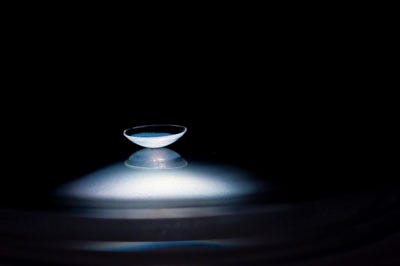Drug-Eluting Contact Lens Passes Milestone
December 12, 2013
|
A drug-eluting contact lens could be effective in treating glaucoma. |
In a paper published on ScienceDirect researchers from Massachusetts Eye and Ear/Harvard Medical School Department of Ophthalmology, Boston Children's Hospital, and the Massachusetts Institute of Technology describe a drug-eluting contact lens designed for prolonged delivery of latanoprost for the treatment of glaucoma. In vitro and in vivo studies with this lens showed an early burst of drug release followed by sustained release for one month. The quantity of drug released can be tailored by varying the thickness of the drug-polymer coating on the lens.
Lead author Joseph Ciolino, MD, Mass. Eye and Ear cornea specialist was also lead author on a 2009 paper describing earlier results. Daniel Kohane, director of the Laboratory for Biomaterials and Drug Delivery at Boston Children's Hospital, was last author on both papers.
Ciolino says that, "In general, eye drops are an inefficient method of drug delivery that has notoriously poor patient adherence. This contact lens design can potentially be used as a treatment for glaucoma and as a platform for other ocular drug delivery applications."
Science has sought to employ contact lenses for drug delivery almost since their invention more than 50 years ago, but the problem has always been in controlling the release of the drug over time. According to Kohane, "The lens we have developed is capable of delivering large amounts of drug at substantially constant rates over weeks to months,"
In a Dec. 6 release, the Massachusetts Eye and Ear Infirmary stated that "The contacts were designed with materials that are FDA-approved for use on the eye. In vivo, single contact lenses were able to achieve, for one month, latanoprost concentrations in the aqueous humor that were comparable to those achieved with daily topical latanoprost solution, the current first-line treatment for glaucoma. [The authors'] findings are described online and will be in the January 2014 printed issue of Biomaterials."
About the Author(s)
You May Also Like



